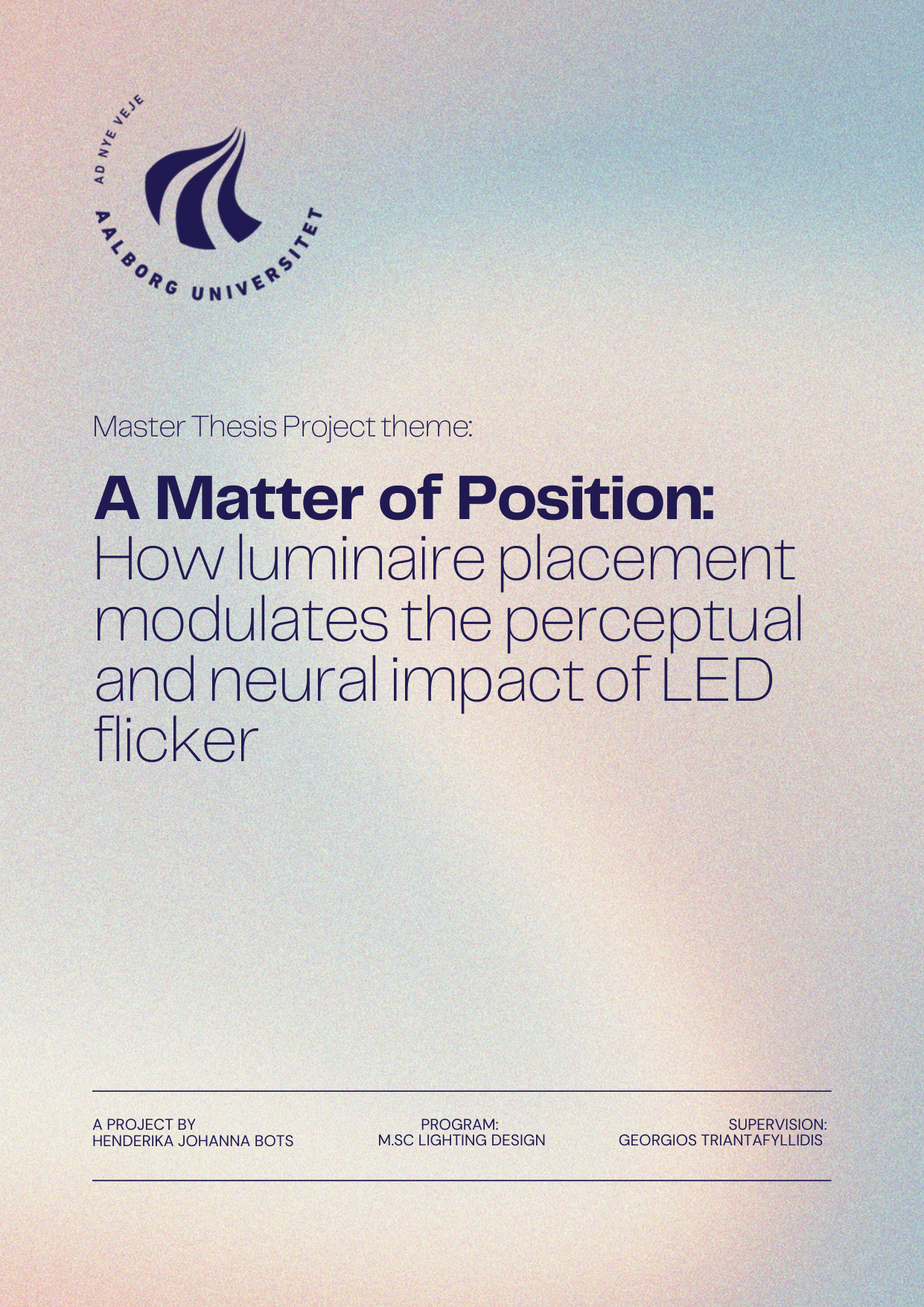
A Matter of Position: How luminaire placement modulates the perceptual and neural impact of LED flicker: An EEG Study on Flicker Perception and Cognitive Load
Translated title
A Matter of Position: How luminaire placement modulates the perceptual and neural impact of LED flicker
Author
Term
4. Term
Education
Publication year
2025
Submitted on
2025-10-17
Pages
62
Abstract
The general adoption of energy-efficient LEDs has introduced non-visual challenges such as flicker. Often, as a by-product of lower-quality drivers. While typically flicker is seen as a nuisance, this thesis aims to explore the impact of flicker through the lens of a lighting designer, asking the main research question: Does the negative impact of a flickering luminaire change depending on where you position it? To see whether there is a correlation between position and frequency, a 2x2 experiment design was set out. It tested a low (60Hz) and a high (200Hz) frequency, with the luminaire being either positioned as general overhead lighting or as task lighting in the participant’s peripheral visual field. Subjective data were gathered through questionnaires, as well as objective data were measured with an EEG. Fifteen participants performed a card-sorting task under the four lighting scenarios. The results show that, subjectively, 60 Hz lighting was most disturbing, especially in the task lighting position. However, these subjective measures were not reflected in the objective Gamma Bandpower. Indicating that the participants might have felt like it was disturbing, their physiology did not reflect that. This shows the disparity between perceived experience and our physiology. The research concludes that, as a lighting designer, when creating a human-centred design, we should look beyond our measures; in the end, the user’s feeling of discomfort is the ultimate benchmark. It also strongly suggests that any luminaire with potentially noticeable flicker should be kept out of the peripheral visual field.
Keywords
Documents
